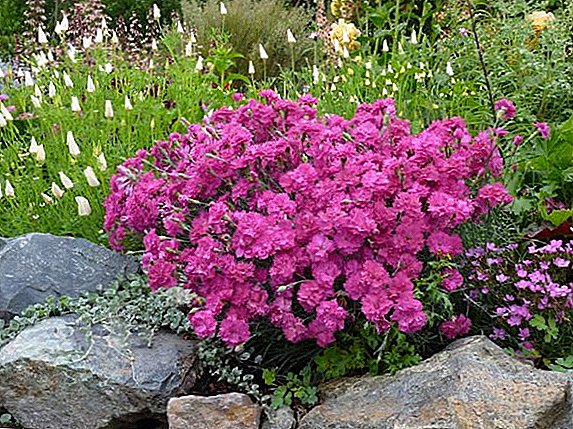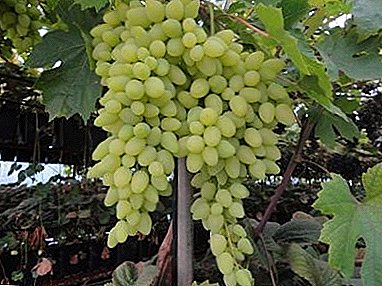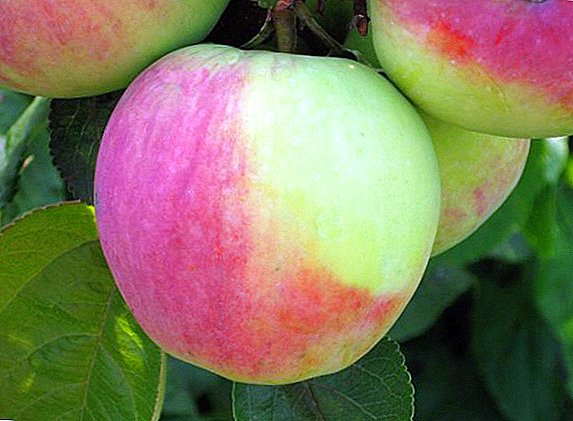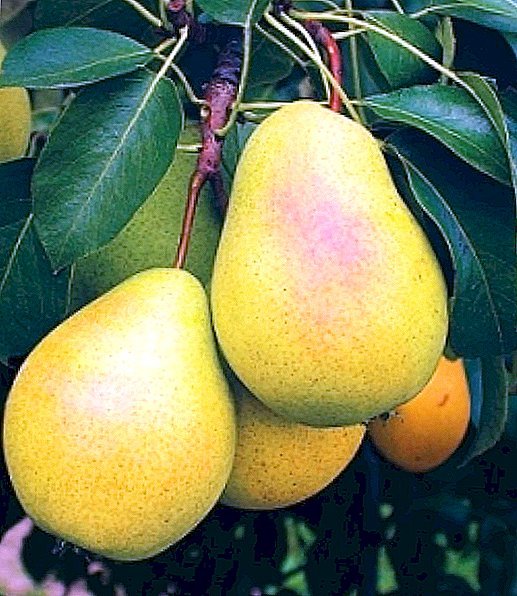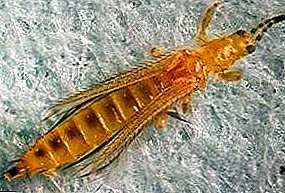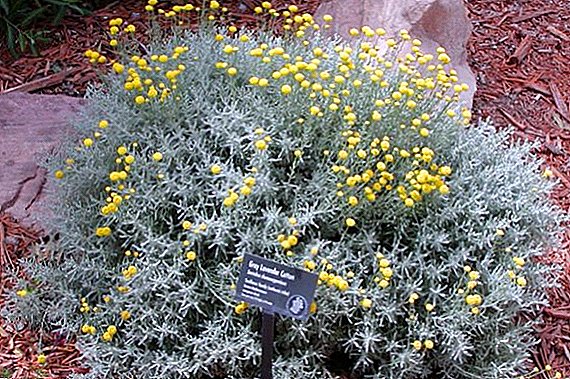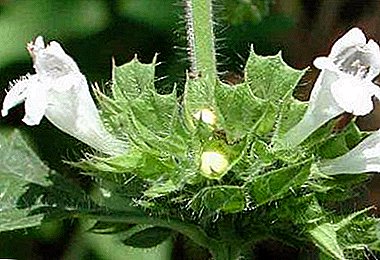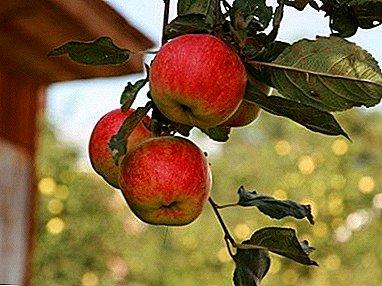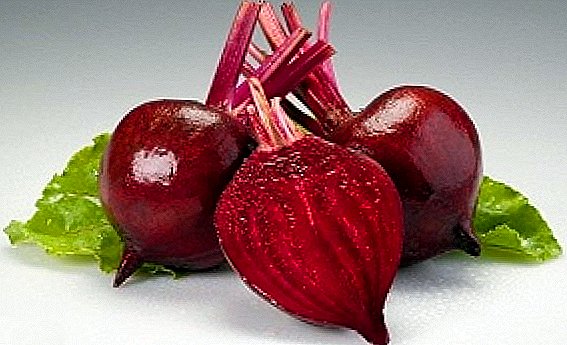
Beetroot is a very multifaceted culture. There are several subspecies of this culture, and they are all different in their appearance, taste, and scope.
That beet, which we use for cooking borscht, is called dining room. Fodder beet is an important part of the diet of domestic animals.
Sugar beets are grown specifically for processing into sugar. There are also leafy and wild beets, but they are not of particular interest because of the low prevalence in our regions.
When choosing varieties for planting, it is better to choose those varieties that were bred by domestic breeders.
Since foreign vegetables sometimes can not adapt to the conditions of the temperate climate zone.
Variety "Boheme"

Mid-season beets. The ripening period is approximately 70 - 80 days.
Designed for cultivation in gardens and personal plots. Fruits, mainly formed round or slightly flattened, painted in maroon color.
Inside the roots are also maroon, no rings. Herself the pulp is very juicy, tender, has excellent taste.
Fruits grow quite large - 0.3 - 0.5 kg. This beet is not affected by chalcosporosis, and also does not bloom. It can be stored for a very long time, as the keeping quality of these root crops is very good.
The soil for this beet must be fertile, with a neutral level of acidity.
It is best to choose a place for beet beds where cucumbers, onions, zucchini, early potatoes or pumpkins used to grow.
To plant seeds soaked in water should be in the last days of April, but not later than mid-May. The depth of the seed is 2-4 cm. Between adjacent rows you need to make an interval of 25-30 cm, and between neighboring seeds 8-8 cm.
If you plan to plant these beets in the fall, then this should be done no later than the end of October - beginning of November.
It is necessary to prepare the soil in the fall, digging it and making all kinds of fertilizers. Watering beets need once a week with plenty of water.
Feed can be no more than two times per season. The amount of fertilizer depends on soil fertility and the number of compounds introduced since autumn. Thin out this beetroot variety is not necessary.
Variety "Detroit"

This mid-season variety is one of the most famous.
Ripens on average for 110 - 115 days. Bushes average height. Fruits are round, with a smooth surface, the axial root is thin and short, the leaf rosette is small.
The color of root vegetables is very beautiful - bright red. Weight This beet average is 100 - 200 g.
The flesh is dark red, the rings are missing, has excellent tasteas well as very juicy.
The grade possesses inborn immunity to beet diseases, and also is steady against tsvetushnosti.
Yield averages 3.7 - 7 kg per square meter m., but with good care you can get more fruits.
You can use this beet in different ways: canned, consumed fresh, and added to various dishes.
The positive quality of this variety is a stable fruiting, and the roots look more or less the same. You can also store this beet for a long time, it will not deteriorate.
Before planting, seed should be soaked in water for 18 - 20 hours. When the ground temperature reaches + 6 ... + 8 ° С, landing can be performed.
Drop seeds can be at a depth of 2 to 4 cm according to the scheme 25-30x10cm. Land already with seeds will need a little ram. The place under the beet bed should be very sunny. This variety is suitable for autumn planting.
Watering beets should be so that the soil was not an excess of moisture, but there was no shortage either. Therefore, you should carefully monitor the temperature changes to predict the fluctuations of moisture in the soil.
When feeding, special attention should be paid to potash fertilizers, since the beets very much "love" them. It should also thin out the land between the rows and remove weeds.
It is also interesting to read about carrot varieties for the Moscow region
Grade "Egyptian flat"

This variety was bred in the distant 1943 g in the NIISH them. V.V. Dokuchaev.
It is considered middle-ripening, since the interval between full germination and the onset of the maturity of the fruit is 101 - 128 days. At plants upright leaf rosette.
The fruits are elliptical, the head is small, painted on the outside in a dark red color, in the mass gain from 300 to 550 g.
The flesh is colored pink-red with a slight purple tinge, very juicy, tender and refreshing. Taste evaluated by experts as good.
With sq.m. You can get 3.5 - 8.5 kg of root vegetables, which is an excellent indicator. The variety is characteristic resistance to tsvetushnosti and drought, but was not vaccinated immunity to chalcosporosis.
The bed is very good, the winter will be able to overpower from 75% to 89% of the fruits.
Gardeners recommend using this variety for autumn-winter cultivation. Planting procedure in the fall does not differ from a similar process in the spring. The planting pattern and the depth of the seeds are preserved.
Due to the low drought tolerance, the variety will withstand short interruptions in irrigation. Need thinning beds and digging between the rows. Making fertilizer required.
Grade "Red Ball"

The early ripe grade of beet which manages to ripen in 65 - 100 days.
The fruits are rounded, red, weighing 200 - 500 g. The flesh is dark red, with violet hues, contains a large amount of juice, sweet and sweet.
This variety is not prone to stitching, resistant to tsvetushnosti, quite cold-resistant, but the yields will decrease if the temperature drops too much.
Also have a grade average drought tolerance. It is possible to use beet roots of this variety as part of a diet, as well as for preparing homemade dishes.
Also, the "Red ball" variety is often taken for beam products. This beet is easily transported and stored. The yield is 3 - 6 kg per sq.m.
It can be used for both spring and autumn cultivation. Sowing in the spring should fall on the last days of April, and autumn sowing should be in September.
Seeds before planting need to prepare. The landing pattern is 45-60x3 cm. The landing depth is normal. The earth must be warm and moist. The place should not be in the shade. After planting, primer need to roll.
Must be frequent watering, 1 time in 5 - 6 days. You also need to cultivate the soil between the rows, to remove weeds. Fertilization is necessary, especially in conditions of heavy or low-fertile soils.
Variety "Libero"

Very early variety - the first fruits can be obtained 80 days after sowing seeds in the ground.
The fruits are round, the spine is very thin, the skin is smooth and painted red. The flesh is dark red, there are circles on it, but they are extremely weak, good taste.
The average weight of a root crop varies between 120 and 220 grams. The resistance to bolting is medium, the yield is high - about 6.1 kg per square meter. meter
The fruits are very similar to each other and ripen with a very small interval. Purpose is universal. Due to the excellent presentation, this variety can be grown for subsequent sale.
You can plant swollen seeds in the ground from mid-April to mid-May. The landing pattern is maintained. Before germination, the bed can be covered with polyethylene.
Sure to need to thin out the beds with beetroot of this variety. The first such procedure is carried out a week after the emergence of shoots.
Beets have special requirements for the amount of moisture in the soil. Therefore, the water balance must be maintained. Approximately 14 - 15 days before harvesting, watering should be stopped altogether. Feeding needs to be done as needed.
Variety "Bordeaux"

Maybe, the most famous beet variety. Refers to mid-season varieties, the ripening period from sowing to the onset of the technical suitability of fruits is 62 - 116 days.
The fruits are round, may be slightly flattened, weighing from 230 to 510 g, are painted in dark red color, the head is small.
The flesh has the same color as the peel, tender and juicy, with lots of sugars, dense in structure.
Lie down these root vegetables can throughout the winter periodwhile there will be no loss in appearance or taste.
Due to the fact that these fruits are submerged in the soil by almost half, the process of harvesting is much easier.
Plants can easily survive a little heat. As for the scope, here there is no equal to this beet. The fruits of the "Bordeaux" are considered among the most useful.
The juice from these root crops contains a high concentration of anthocyanins. The variety will be used for processing and cooking, indispensable for diets. The yield reaches 8 kg of beets per square. meter
Despite its uniqueness, the seeds of Bordeaux beets should be planted in the same way as the seeds of all other varieties, all parameters being preserved. When soaking seeds, you can use drugs that stimulate the variety.
Caring for the plants of this beet ordinary. There may be slight delays in watering, but sometimes it is even useful for hardening shrubs. Thinning, loosening of the soil and top dressing need to be carried out according to the plan.
Grade "Cylinder"

Mid-season beets with maturity of 110 - 130 days from the time of sowing.
The fruits are cylindrical, hence the name of the variety, long (10–16 cm) and thick (diameter reaches 5–9 cm), dark red in color, weighing from 180 to 350 g.
The head at the root of medium size. Pulp contains a lot of juice, very delicate, with good taste, burgundy, without ringlets.
The storage quality of this variety is excellent. Almost all the fruits calmly survive the winter in some cool, dark place. Harvesting will not be difficult, as the roots actually stick out of the ground.
In cooking, they are widely used, since they do not need to spend a lot of time waiting for the moment when the beets are cooked. Also in the roots of this variety there is an increased concentration of iron, calcium, vitamins A, B1, B2, C and niacin. High yield - 6 kg per sq. M.
Seeds before planting need to soak. The best months for dropping seeds are May and October. The landing pattern is maintained. Depth should be increased to 3 - 4 cm.
This variety is extremely demanding on soil moisture, so you can not pour water into the ground or delay irrigation. The rest of the care remains.
Variety "Lark"

Dutch mid-season beets. From the moment of emergence of shoots, 100-120 days should pass until the fruits reach maturity.
Fruits are round, dark red, weighing 150 - 300 g, leaf rosette is very small. The flesh of the same color as the peel, devoid of radial rings, has excellent taste.
Observed resistance to tsvetushnosti, the fruits of this class can be collected by mechanical means. Store roots "Larki" can be a long time, they will not spoil.
Productivity reaches 6.5 kg per square meter. A feature of this beet is the fact that its consumption will contribute to the removal of radionuclides from the human body. It can be used both raw, and for the preparation of various dishes, and for processing.
This beet is suitable for very early plantings, but the standard dates are preserved. Seeds should be soaked before sowing. Depth and landing pattern are normal.
With fluctuations in temperature, planting will need to be protected, especially if the plants are still young. Watering, fertilizing and loosening the soil are required.
As has already become clear, beetroot is a very useful root vegetable. Therefore, its presence does not interfere with you, but on the contrary - will benefit. And not only to you personally, but also to your whole family, which you will be able to please with fresh, healthy beet dishes.


